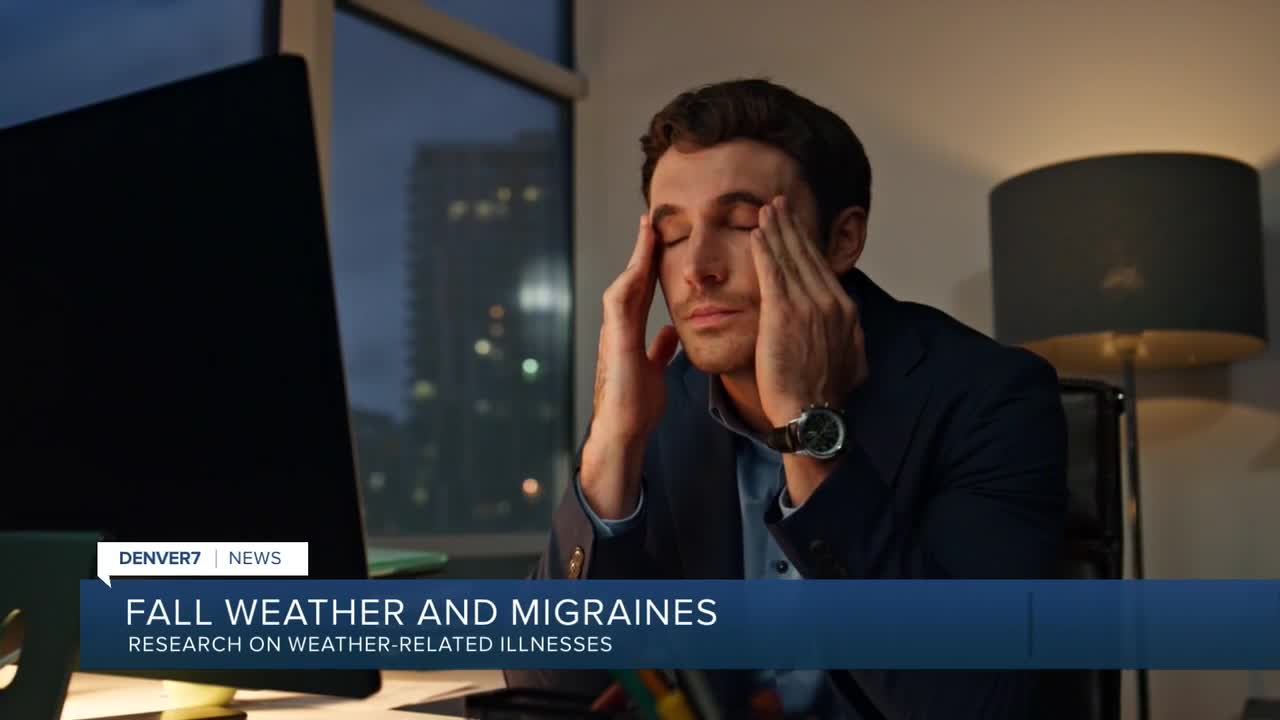DENVER — If you are suffering from an intense migraine, a significant shift in the weather could be to blame.
Research suggests that between 30% and 50% of people with migraines identify some weather change as a trigger.
“Being a trigger, it's not going to be the cause of migraine, but it's going to make a person more susceptible,” said UCHealth Neurologist Dr. Danielle Wilhour.
Big temperature swings, storms, and fluctuations of barometric pressure — the weight of the air in the atmosphere — can trigger a migraine.
UCHealth neurologist Dr. Danielle Wilhour said she noticed the regional differences when she moved from the East Coast to Colorado, a state with frequent weather fluctuations.

“When I moved out here to Colorado, almost every day, patients reported to me that the weather changes, whether it be a windy day, a really drastic temperature change, the air quality from a wildfire, was really worsening or increasing their frequency of migraines,” Dr. Wilhour said.
Dr. Wilhour said barometric pressure in particular can activate the trigeminal vascular system — the part of the brain that can trigger the migraine response.
“You may feel that pressure difference as well as pressure sensing areas in your brain and skull, so that can cause migraine attacks in many individuals,” Dr. Wilhour said.
According to the American Migraine Society, there are over 39 million people living with migraine or severe headache disorders in the United States.
Migraines also affect three times as many women as men.
Dr. Wilhour recommended several steps to reduce migraine triggers, including tracking your migraines and the forecast in a diary, wearing sunglasses on days when the sun is harsh, and preemptively taking medications when there is a storm or significant temperature change.
She also recommends getting a good night’s rest, eating high-quality, nutritious food, staying hydrated, and exercising.
“I hear all the time, ‘Oh, I thought that was normal. I thought this is something I just had to live with.’ But actually, that doesn't need to be the case. There are so many different treatment options,” Dr. Wilhour said.





